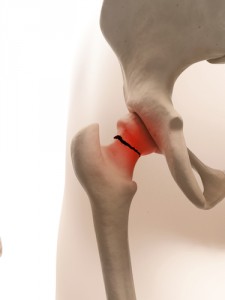An insurance policy is a contract. Insureds must read and understand their own insurance policy.
Right? Except no one reads an insurance policy. I’m not just talking about Joe Six-Pack here. I’m talking about you, my dear reader: You, me, all of us. Why? Because our busy and lazy lives don’t allow us time to do it. “Just give me the nutshell” is the mantra even insurance lawyers have in their personal lives.
In Maryland, GEICO and State Farm, in particular, write a lot of umbrella policies. Few of these standard policies have uninsured motorist coverage. But every victim that comes to us believes that they do.
The problem with this is that there are rare instances where reasonable people would expect insurance coverage but don’t because they didn’t read their insurance policies. What do we do in these cases when we know it is reasonable to expect coverage?
Strickley v. State Farm
The Maryland Court of Appeals answered this question incorrectly in Stickley v. State Farm last month.
The plaintiff was riding as a passenger in a car driven by her husband when her husband negligently drove into an intersection and was struck by another vehicle.
The accident killed the plaintiff’s husband and left her with serious injuries. At the time of the accident, the plaintiff and her spouse had a motor vehicle liability insurance policy with State Farm Mutual Automobile Insurance and an umbrella policy with its subsidiary State Farm Fire and Casualty Company.
No, I have no idea why they do it this way.
Household Exclusion
The umbrella policy contained a household exclusion, which denied payment of damages for bodily injury or personal injury resulting from the negligence of another insured household member.
After the accident, the plaintiff filed a claim under the motor vehicle liability and umbrella policies. State Farm offered the plaintiff the full amount in liability coverage under the former but denied the second claim because of the household exclusion. The plaintiff subsequently filed suit seeking to declare the household exclusion void.
Supporting her claim, the plaintiff cited Maryland Code § 19-504.1 of the Insurance Article. This statute requires an insurer to offer its insured, under a policy or binder of private passenger motor vehicle liability insurance (“PPMVLI”), the same amount of liability coverage for both claims made by family members and non-family members.
The plaintiff argued that the umbrella policy was a PPMVLI, and because State Farm never offered her and her husband equal coverage for family members, the household exclusion was void. Here, the court addressed two questions: (1) whether an umbrella policy that includes motor vehicle liability insurance constitutes a PPMVLI, and (2) whether the household exclusion violated public policy.
Policy or Binder of Private Passenger Motor Vehicle Liability Insurance.
The court first examined the plain language of the phrase “policy or binder of private passenger motor vehicle liability insurance.” The court noted that PPMVLI refers to a particular type of motor vehicle liability insurance, whereas a personal liability umbrella policy covers a variety of losses.
Thus, umbrella policies attach to the insured, whereas PPMVLIs attach to the motor vehicle. Also, the court stated that umbrella policies are a supplemental form of insurance distinguishable from primary policies including motor vehicle liability insurance or homeowner’s insurance.
Because they are supplemental, umbrella policies only kick in once the primary policy has been exhausted. For example, if an automobile policy had a liability limit of $100,000, the umbrella policy would pick up after that point and cover for an additional amount. Continue reading




